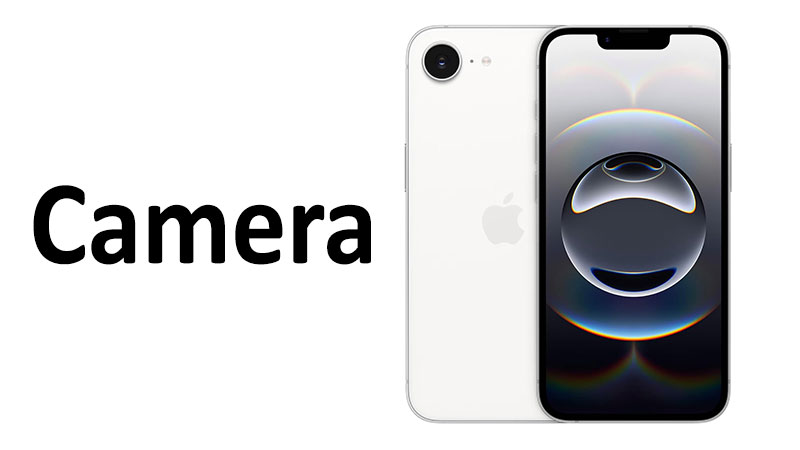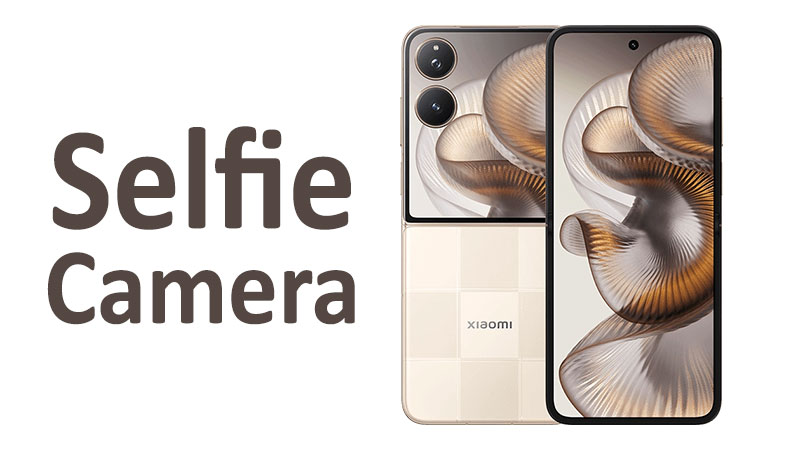The camera has become a core feature for any modern smartphone. It’s often a primary factor for many consumers when choosing a new device. The Apple iPhone 16e camera is a significant talking point. It represents Apple’s latest approach to bringing high-end photography features to a more accessible price point. This comprehensive guide will explore the iPhone 16e camera specs, its real-world performance, and the features that make it stand out.
A New Approach to Mobile Photography
Apple has long been known for its computational photography. The iPhone 16e continues this legacy with its camera system. It offers a single but powerful rear lens. This design choice focuses on optimizing one camera instead of providing a multi-lens array. For many users, a single, high-quality camera is all they need.
The iPhone 16e camera aims to deliver a top-tier user experience. It combines impressive hardware with advanced software. This combination ensures users can capture stunning photos and videos with minimal effort. This article will delve into all the details. We will cover everything from the sensor to the user-friendly features.
A Detailed Look at the Main Camera
The main camera on the iPhone 16e is a significant upgrade. It features a 48 MP sensor. The lens has a wide 26mm focal length and an f/1.6 aperture. The sensor size is 1/2.55′′ with 0.7μm pixels. This setup is highly capable. It is designed to capture excellent detail and light.
The 48 MP sensor uses pixel-binning technology. This means it combines data from four pixels into one. The result is a high-quality 12 MP image. This process greatly improves low-light performance. It also helps reduce noise in photos. Users can also shoot in a full 48 MP mode. This provides maximum detail, but the file sizes are much larger.
The camera system also includes several key features. It has Phase Detection Autofocus (PDAF). This ensures fast and accurate focusing. The inclusion of Optical Image Stabilization (OIS) is crucial. OIS helps to counteract camera shake. It results in sharper photos and more stable videos, especially in challenging conditions.
For low-light situations, the camera features a dual-LED dual-tone flash. This provides balanced illumination for subjects. Other features include HDR and Panorama modes. These help to capture a wider dynamic range and expansive landscapes. The camera also supports 3D spatial audio recording. This adds an immersive sound dimension to videos.
Comparison with Previous Models
The iPhone 16e’s 48 MP sensor is a major leap from the iPhone SE series. It brings it on par with the iPhone 16 and 15 models. The iPhone 15 also had a 48 MP main camera. However, the iPhone 16e’s single-lens setup differs from the iPhone 15’s dual-camera system. The iPhone 15 included a 12 MP ultrawide camera. This is a feature the 16e lacks.
Pros of the Main Camera
- High-Resolution Sensor: The 48 MP sensor provides excellent detail. It allows for high-quality shots.
- Great Low-Light Performance: The f/1.6 aperture and pixel-binning improve performance in low light.
- Effective OIS: Optical Image Stabilization ensures sharp, blur-free photos and steady video.
- Fast Autofocus: PDAF technology allows for quick and precise focusing on subjects.
Cons of the Main Camera
- No Ultrawide Lens: The single camera design means there is no option for ultrawide shots.
- No Optical Telephoto Zoom: The 2x zoom is a digital crop from the main sensor. It is not a true optical zoom. This can lead to a slight loss of quality.
Video Recording Capabilities
The iPhone 16e camera excels in video recording. It can record 4K video at various frame rates. This includes 24, 25, 30, and 60 fps. It also supports 1080p recording up to 240 fps for slow motion. The videos are sharp, detailed, and have excellent color.
The inclusion of Dolby Vision HDR is a highlight. This feature captures a wider range of colors and contrast. The result is more lifelike and vibrant video footage. OIS is active during video recording. This feature is crucial for smooth and professional-looking clips. The phone also records stereo sound. This makes the audio as high-quality as the visuals. The 3D spatial audio feature adds an extra layer of depth. It’s a great feature for content creators.
The Front-Facing Selfie Camera
The selfie camera on the iPhone 16e is equally impressive. It is a 12 MP camera with an f/1.9 aperture and a 23mm wide lens. The sensor is 1/3.6′′ with 1.0μm pixels. It includes PDAF for quick and accurate selfies. The front camera also features an SL 3D depth/biometrics sensor. This is used for Face ID.
Just like the main camera, the selfie camera supports HDR and Dolby Vision HDR. This ensures selfies and front-camera videos have great dynamic range and color. The video recording capabilities are strong. It can record 4K at up to 60 fps. It also supports 1080p slow motion. The stereo sound recording is a nice touch.
Comparison with Competitors
The iPhone 16e’s selfie camera holds its own. Its autofocus is a key differentiator from many mid-range phones. Many competitors use fixed-focus selfie cameras. The inclusion of Dolby Vision HDR and 4K 60fps video is also a premium feature. This sets the iPhone 16e apart from many rivals in its class.
Key Performance and Features
The iPhone 16e’s camera performance is more than just specs. It is driven by Apple’s powerful A18 chip. The new A18 Bionic chip includes an updated image signal processor (ISP). It also features a new Neural Engine. This hardware powers Apple’s computational photography.
Features like Deep Fusion and Smart HDR 5 improve image quality. Deep Fusion processes multiple exposures to create a single, highly detailed image. Smart HDR 5 optimizes highlights and shadows. It ensures photos look natural and balanced. These software features work seamlessly in the background. They make taking a great photo simple.
The camera’s performance in various scenarios is excellent. Daylight photos are sharp, with accurate colors and a wide dynamic range. In low-light, the camera’s Night mode automatically activates. It captures bright and clear photos with minimal noise. The OIS helps in these situations by allowing for longer exposure times without blur.
Portrait mode is also available. It uses the depth sensor to create a professional-looking bokeh effect. The background is artfully blurred. This makes the subject stand out. The quality of the bokeh is very good for a single-lens system.
Important Points for Buyers
- Single Rear Camera: The iPhone 16e has a single rear camera. There is no ultrawide or telephoto lens. If you need these, you should consider a higher-end model.
- Computational Zoom: The 2x zoom is a digital crop. It uses the high-resolution sensor to simulate a telephoto lens. While effective, it won’t match a true optical zoom.
- Video Capabilities: Video recording is a major strength. The 4K recording, Dolby Vision HDR, and spatial audio are premium features.
- Selfie Camera: The front camera is a highlight. The autofocus and 4K video recording make it great for vlogging and video calls.
- A18 Chip: The powerful A18 chip is key to the camera’s performance. It handles all the computational photography effortlessly.
Conclusion
The Apple iPhone 16e camera offers a compelling package. It is a powerful single-lens system. The 48 MP main camera is a huge step up from previous “e” or SE models. It delivers excellent image and video quality in most conditions. The performance is bolstered by the A18 Bionic chip. This allows for advanced computational photography features.
The camera’s strengths lie in its simplicity and effectiveness. It removes the complexity of multiple lenses. Instead, it provides a single, highly capable camera. This is perfect for the average user. They can point and shoot and get fantastic results. Features like 4K video, Dolby Vision HDR, and OIS are also huge wins. The selfie camera is a standout feature with its autofocus and 4K recording.
However, the lack of an ultrawide or a true telephoto lens is a notable compromise. This is the main trade-off for the lower price point. For most users, this will not be a problem. For enthusiasts who need more versatility, other models may be a better fit.
Overall, the iPhone 16e camera provides an exceptional user experience. It brings high-end features to a more accessible device. It’s a smart choice for anyone seeking a great camera without breaking the bank. It proves that a single, well-optimized camera can be better than a complicated multi-lens system.
FAQ
Is the iPhone 16e’s camera the same as the iPhone 16’s?
No. While both have a 48 MP main camera, the iPhone 16e lacks the ultrawide camera found on the standard iPhone 16. The underlying sensor may also differ.
Can the iPhone 16e shoot in RAW format?
The iPhone 16e does not support Apple ProRAW. This is a feature reserved for the “Pro” models. It captures images in HEIF or JPEG formats.
Does the iPhone 16e have a Night Mode?
Yes, the iPhone 16e has Night Mode. It automatically activates in low-light conditions. It uses computational photography to produce bright, clear photos.
What is the 2x zoom on the iPhone 16e? Is it optical?
The 2x zoom is a digital crop. It uses the 48 MP sensor to get a 12 MP image. It is not a true optical zoom lens.
Is the iPhone 16e good for vlogging?
Yes. The iPhone 16e is great for vlogging. Its front-facing camera has autofocus and can record in 4K at 60fps. It also records stereo audio.



